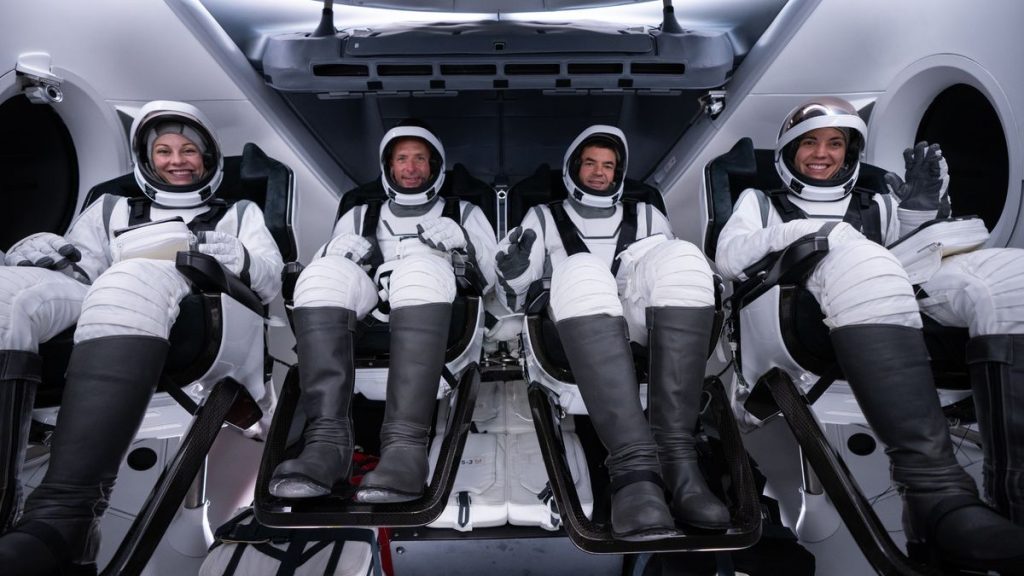Polaris Dawn may be a private mission, but it’s conducting research that will benefit NASA.
Polaris Dawn lifted off early Tuesday morning (Sept. 10) atop a SpaceX Falcon 9 rocket, sending four people to orbit for a roughly five-day stay aboard the Crew Dragon capsule “Resilience.” The mission aims to make exploration history, conducting the first-ever private spacewalk and traveling farther from Earth than any crewed flight since the Apollo era.
But Polaris Dawn is also a science mission: It’s carrying 36 different experiments from 31 institutions — including a number that will gather data for NASA’s Human Research Program. (The agency partners with SpaceX on cargo and crew missions to the International Space Station, but Polaris Dawn is not one of these flights; it’s funded and commanded by billionaire entrepreneur Jared Isaacman, and it’s flying solo around Earth, not meeting up with the ISS.)
The NASA-affiliated experiments are designed to help agency scientists better understand spaceflight’s impacts on the human body — information that should aid further crewed exploration efforts down the road.
“Each mission, whether the crew is comprised of commercial or NASA astronauts, provides a key opportunity to expand our knowledge about how spaceflight affects human health,” Jancy McPhee, associate chief scientist for human research at NASA, said in a statement. “Information gathered from Polaris Dawn will give us critical insights to help NASA plan for deeper space travel to the moon and Mars.”
For example, the Polaris Dawn crew — Isaacman, pilot Scott “Kidd” Poteet, and mission specialists Sarah Gillis and Anna Menon — “will test-drive a commercial device that can collect and integrate measurements of health, including blood pressure, heart rate, respiration rate and temperature,” according to the NASA statement.
That device also captures ultrasound imagery and sports an “experimental telemedicine feature” that could help diagnose astronaut health issues in near-real time.
“Crewmembers will need to be more self-reliant during lengthy missions, and we hope that telemedicine can provide crews with assistance,” McPhee said.
Another Polaris Dawn project seeks to highlight and mitigate the motion-sickness problems that can afflict astronauts. Another will survey crewmembers about their experiences during reentry to Earth’s atmosphere, with the aim of making that as smooth and issue-free as possible.
In addition, the Polaris Dawn astronauts will participate in a variety of studies organized by the Translational Research Institute for Health (TRISH), a NASA-funded consortium of academic institutions.
“Polaris Dawn crewmembers participating in these TRISH studies will provide data about how spaceflight affects mental and physical health through a rigorous set of medical tests and scans completed before, after, and during the mission,” the NASA statement reads. “The work will include assessments of behavior, sleep, bone density, eye health, cognitive function and other factors, as well as analysis of blood, urine and respiration.”
You can learn more about the Polaris Dawn experiments via the mission’s website as well.

